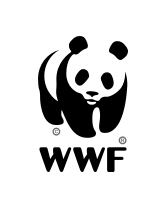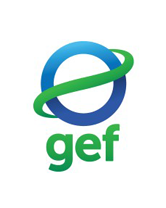Focal Areas
GEF Programing is organized around five Focal Areas, each of which are aligned to Conventions and Environmental agreements for which the GEF acts as a financial mechanism.
The focal area strategies guide the major approaches under which GEF resources are programmed. Each focal area strategy includes objectives and programs that prioritize the activities to receive support. Focal area strategies, objectives, and programs can be found here.
Biodiversity
The goal of the biodiversity focal area is the conservation and sustainable use of biodiversity and the maintenance of ecosystem goods and services.
Climate Change
Climate Change Mitigation: GEF’s overall goal in climate change mitigation is to support developing countries and economies in transition toward a low-carbon development path.
International Waters
The goal of the International Waters focal area is the promotion of collective management for transboundary water systems and subsequent implementation of the full range of policy, legal, and institutional reforms and investments contributing to sustainable use and maintenance of ecosystem services.
Land Degradation
The overall goal of the Land Degradation focal area strategy is to contribute in arresting and reversing current global trends in land degradation, specifically desertification and deforestation.
Chemicals & Waste
The goal of the Chemicals focal area is to promote the sound management of chemicals throughout their life-cycle in ways that lead to the minimization of significant adverse effects on human health and the global environment. This Focal Area supports the Minamata and Stockholm Conventions.
Impact Programs & Integrated Programs
There are several benefits for country governments to invest STAR resources towards a GEF Integrated Program:
- For every $3 of STAR that a country puts towards an Integrated Program, they are eligible for $1 of set-aside (funding from a global envelope)
- Increases integration and systemic level of interventions
- A Coordination child project for integrating all child projects under each GEF Integrated Program
GEF 8:
The overarching focus of GEF 8 is ‘Healthy People, Healthy Planet’ and ‘green and blue recovery’ .
In GEF 7 there were 3 impact programs which create the foundation for 11 new Integrated Programs in GEF 8. The goal of the Integrated Programs is to encourage more integrated (cross focal area) programming. The integrated programs collectively address drivers of environmental degradation and work towards systems transformations.
11 Integrated Programs in the GEF 8 Strategy

|
GEF8 Integrated Programs |
IP Objective |
|
Critical Forest Biomes (Amazon, Congo+) |
Conservation and effective governance of critical forest biomes (Congo, Amazon, Meso-America, Indo-Malayan, Guinean West Africa) |
|
Landscape Restoration |
Integrated approaches for restoration of degraded ecosystems |
|
Blue and Green Islands |
Nature-based Solutions in key ecosystems that support socio-economic development in SIDS countries |
|
Wildlife Conservation for Development |
Conserve wildlife and landscapes by transforming the drivers of species loss and ensuring that countries and communities are benefiting from these natural assets |
|
Food Systems |
Catalyze the transformation to sustainable food systems that are nature positive, resilient, and pollution reduced. Reduce environmental degradation and negative externalities in food production systems and across supply chains on the demand side |
|
Greening Infrastructure Development |
Enable countries to develop portfolios of transportation infrastructure projects at national or land/seascape levels that build in sustainability from inception (upstream planning) |
|
Net-zero Accelerator |
Accelerate implementation of nature positive, net-zero pathways by investing in nature and new technologies |
|
Clean and Healthy Oceans |
Address hypoxic zones by curbing coastal pollution from agricultural, industrial and municipal sources through infrastructure investments combined with Nature-based Solutions |
|
Sustainable Cities |
Advance the integrated urban and territorial planning and implementation with a focus on developing innovative sustainability solutions and creating an enabling environment to deliver large scale climate, biodiversity, resilience, and inclusion benefits |
|
Circular Solutions to Plastics Pollution |
Circular economy approaches to reduce plastic production, consumption, and waste in the food and beverage sectors |
|
Elimination of Hazardous Chemicals from Supply Chains |
Prevent chemical pollution from the supply chains of fashion and construction as well as significantly improve the sustainability of these sectors by creating circular and closed loop supply chains |
GEF 7:
Building on the Integrated Approach Pilots (IAPs) created under GEF 6, under GEF 7 the GEF determined three Impact Programs to create systematic change across focal areas. “The impact programs collectively address major drivers of environmental degradation and/or deliver multiple benefits across the many thematic dimensions the GEF is mandated to deliver” (GEF 7 programming directions). More information on each of the impact programs can be found in the GEF 7 programming directions.
Food Systems, Land Use, and Restoration (FOLUR) Impact Program. The FOLUR Impact Program focuses on achieving three objectives: (1) Promoting sustainable food systems to meet growing global demand, (2) Promoting deforestation-free agricultural commodity supply chains to slow loss of tropical forests, and (3) Promoting restoration of degraded landscapes for sustainable production and to maintain ecosystem services, which will be described in detail further below.
- Improve efficiency of food value chains
- Remove deforestation from commodity supply chains
- Restore degraded lands
Sustainable Cities. The Sustainable Cities Impact Program is built on the experience of GEF-6 SC-IAP. The main thrust of the program remains the same, namely, to support sustainable and integrated urban planning by enhancing policy and financing environments to promote innovations for improved urban infrastructure, and to revamp how cities operate at all levels and for all stakeholders (GEF 7 programming directions).
Sustainable Forest Management (SFM) Impact Program. The SFM Impact Program aimed to “address the drivers of forest loss and degradation through strategies aimed at creating a better enabling environment for forest governance; supporting rational land use planning across mixed-use landscapes; strengthening the management and financing of protected areas; clarifying land tenure and other relevant policies; supporting the management of commercial and subsistence agriculture lands to reduce pressure on adjoining forests; and utilizing financial mechanisms and incentives for sustainable forest management” GEF 7 programming directions).
Three 3 key geographies have been prioritized:
- Amazon
- Congo Basin
- Important drylands

